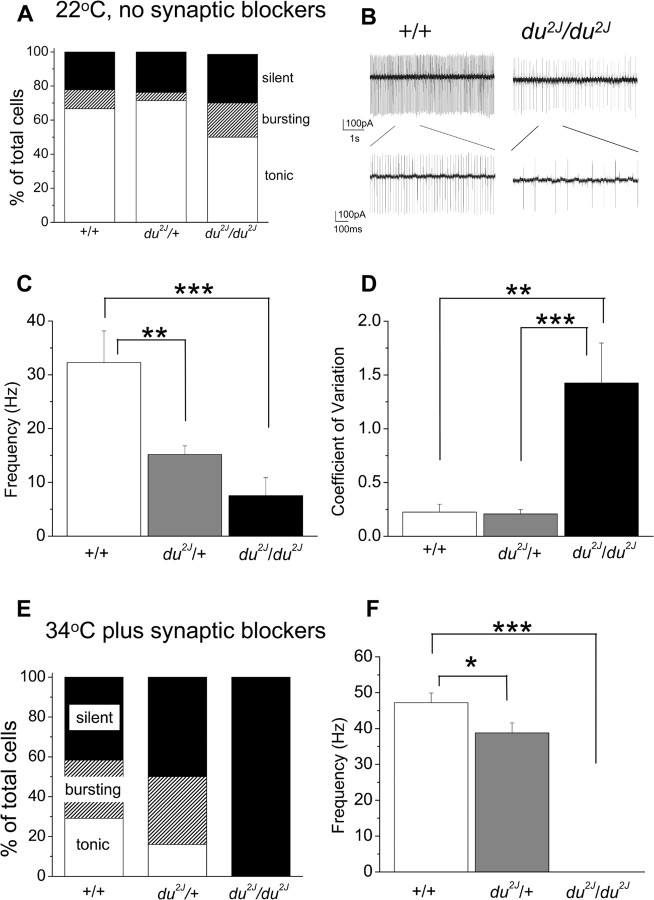Figure 2.
Spontaneous firing properties of cerebellar PCs from +/+, du2J/+, and du2J/du2J mice. A, Percentage of PCs that are silent (black bar) or firing either tonically (white bar) or in a bursting pattern (hatched bar), when recorded in cell-attached mode at 22°C and in the absence of any synaptic blockers, for +/+ (n = 9 cells from 3 mice), du2J/+ (n = 21 cells from 5 mice), and du2J/du2J (n = 17 cells from 6 mice). B, Continuous recordings in cell-attached mode showing a typical example of tonic firing pattern of a +/+ cell (left) and a du2J/du2J cell (right) at room temperature and in the absence of synaptic blockers. The bottom panel shows the regions delineated on an expanded time scale. C, Mean instantaneous tonic firing frequency for +/+ (white bar; n = 6 cells from 3 mice), du2J/+ (gray bar; n = 14 cells from 5 mice), and du2J/du2J (black bar; n = 8 cells from 6 mice). ***p < 0.001 **p < 0.01 (ANOVA and Tukey's multiple-comparison test). D, CV of firing rates for the tonically firing cells analyzed in C. ***p < 0.001, **p < 0.01 (ANOVA and Tukey's multiple-comparison test). E, Percentage of PCs that are silent (black bar) or firing either tonically (white bar) or in a bursting pattern (hatched bar), when recorded in cell-attached mode at 34°C and in the presence of synaptic blockers (6 μm SR95531, 20 μm NBQX, 10 μm 7Cl-kynurenate), for +/+ (n = 24 cells from 5 mice, P19–25), du2J/+ (n = 50 cells from 9 mice, P17–24), and du2J/du2J (n = 26 cells from 5 mice, P19–22). F, Mean instantaneous firing frequency for tonically firing PCs, for +/+ (white bar; n = 7), du2J/+ (gray bar; n = 8), and du2J/du2J (0 of 26; note that none of the du2J/du2J cells exhibited any spontaneous firing) recorded at 34°C in the presence of synaptic blockers. *p < 0.05, ***p < 0.001 (ANOVA and Tukey's multiple-comparison test). Error bars indicate SEM.

